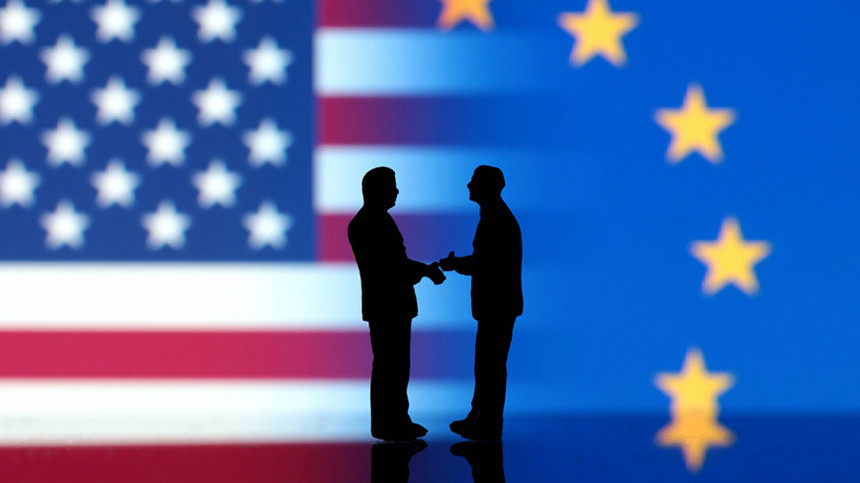
The Transatlantic Partnership on Trade and Investment between the US and the European Union, also known as the TTIP, is not intended as a classic trade agreement that merely eliminates tariffs and opens markets to investments, services and government procurement. Its importance and its difficulty is that intends to go further with the adaptation of rules and technical standards that currently represent the most significant barriers to transatlantic trade. The differences in the regulation may incur additional costs equivalent to tariffs of between 10% and 20% in some sectors, while classic tariffs are set around 4% on average. The importance and the gains of the TTIP are in the elimination of non-tariff barriers based on complex regulations that currently represent the major obstacle to trade.
The agreement and its framework
The joint statement of the US President, Barak Obama, President of the European Council, Herman Van Rompuy, and the President of the European Commission, Jose Manuel Barroso, on February 13, 2013, marked the beginning of the process to accomplish the TTIP. The recommendations were confirmed then published on February 11, 2013, the High Level Working Group created on November 28, 2011 and co-led by US Trade Representative Ron Kirk and EU Trade Commissioner Karel De Gucht. Its purpose was to recommend policies and measures in the face of increasing trade and investment for better employment, economic growth and international competitiveness for both parties.
In his discourse on the State of the Union February 12, 2013, President Obama had already announced the start of talks and left no room for doubt about the objectives of balance between the Asia-Pacific axis, with the Trans-Pacific Association agreement of (TPA) and the North Atlantic, with the TTIP.
In June 2013, the EU Council gave a mandate to the European Commission to start negotiations. Although transatlantic relations had an initial bilateral, regional dimension, in future this could lead to a future transatlantic (United States, Mexico and Canada) free trade agreement between America and the European Union. Indeed, after reaching agreement with the United States, the EU already had agreements with the three North American partners (with a predictable and necessary updating of the partnership agreement with Mexico, in force since 2000). Instead, transpacific multilateral relations have the regional dimension between America and Asia as a starting point. The Trans-Pacific Partnership agreement was created in 2006, out of a trading bloc created for the elimination of tariffs and consisting of New Zealand, Singapore, Brunei Darussalam and Chile. The incorporation of the United States launched a broader and more open trading platform, with further potential for economic integration in the Asia-Pacific region, and currently comprises twelve countries.
America is the common element of TPA and the TTIP, but the bilateral agreement between the US and the EU, the two major trade and investment powers in the world, generated fear in Europe about the changes that might occur in the field of multilateral trade negotiations. This fear concerned in particular the protection of intellectual property rights and investment. Emerging economies, meanwhile, were wary of changes in multilateral rules that such an agreement would impose.
The difficulties in the Doha Round of the World Trade Organization
In May 2013, between the date of the statements and the mandate of the EU Council to the Commission, the final choice of candidate for Director General of the World Trade Organization (WTO) occurred. Herminio Blanco, Mexican candidate, liberal, negotiating the North American Free Trade Agreement (NAFTA, or NAFTA, for its acronym in English), supported by the US and the EU, was defeated by the Brazilian candidate, Roberto Azevêdo, widely supported by developing countries. Although there should not have been a direct relationship between the two events, the fact is that since 2001 when the Doha Round of WTO began -whose mission was to eliminate barriers to multilateral trade- bilateral or regional agreements have proliferated and WTO multilateral negotiations have been stalled. The difficulties in the negotiations have been enormous. The failure of the Millennium Round of the WTO in Seattle in 1999 sought to amend the new Doha (Qatar) round in November 2001. In Seattle, the movement known as "anti-globalisation" or "after-world" began counter free trade. These were consolidated in the parallel World Social Forum, held for the first time in Porto Alegre (Brazil) in January 2001, and have been accompanied by protests and alternative proposals to the ministerial meetings of the Doha Round and other bilateral or multilateral negotiations on free trade, or associated property rights in international trade.







